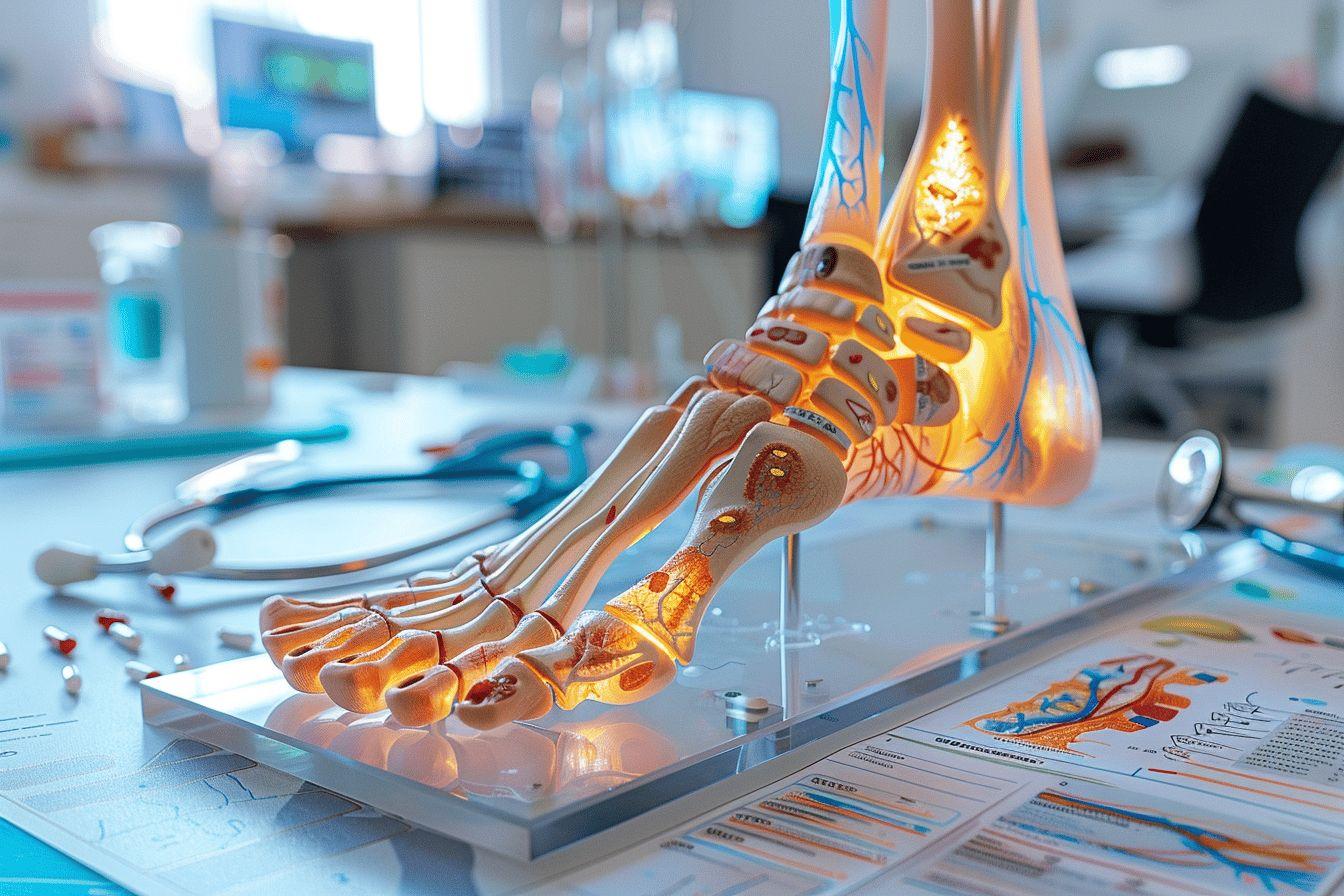The soles of the feet, located on the underside of the foot, are essential for balance and mobility. Here are the key takeaways:
- Location: Extends from the heel to the base of the toes, forming an arch Plantar Fascia
- Structure: Composed of thick skin, adipose tissue, plantar fascia and intrinsic muscles
- Functions: Support, shock absorption, propulsion, and proprioception
- Care: Proper footwear, strengthening exercises, and regular massages are recommended. Recommended
The soles of the feet, this essential part of our anatomy, play a crucial role in our balance and mobility. But do you know exactly where they are located? Let's dive into the details of this fascinating area of the human body, often used but sometimes misunderstood. Let's examine its precise location and its importance for our daily health and well-being.
Anatomical Location of the Sole of the Foot
The sole of the foot, also called the arch of the foot, is located on the underside of the foot. It extends from the heel to the base of the toes, thus covering the entire surface that comes into contact with the ground when we stand or walk. This area is characterized by its concave shape, which gives it unique properties in terms of shock absorption and body weight distribution.
To better understand its position, here are the main parts that make up the sole of the foot:
- The heel: posterior part
- The medial arch: inner central zone
- The lateral arch: outer central zone
- The metatarsal pads: anterior part
- The toe box: front end
It's important to note that the soles of the feet are not simply flat surfaces. Their complex structure allows them to adapt to different types of terrain and movements. The arch of the foot acts as a natural shock absorber, absorbing shock and distributing forces when walking or running.

Structure and Components of the Sole of the Foot
The sole of the foot is a marvel of natural engineering, composed of several elements that work together to ensure our stability and comfort. Let's take a closer look at these essential components:
| Component | Description | Function |
|---|---|---|
| Skin | Thick and durable | Protection against friction and shock |
| Fabric Fatty Acids | Fat Pads | Shock Absorption |
| Plantar Fascia | Fibrous Tissue Band | Arch Support |
| Intrinsic muscles | Small muscles of the foot | End of Movements |
| Ligaments | Connective Tissues | Foot Structure Stability |
The plantar fascia deserves special attention. This band of connective tissue extends from the heel to the base of the toes and plays a crucial role in maintaining the arch of the foot. On the other hand, it can sometimes be prone to inflammation, known as plantar fasciitis, a painful condition that affects many people.
The Intrinsic foot muscles, although often overlooked, are essential for flexibility and precision of foot movement. They help maintain balance and adapt the foot's position to uneven terrain.
Role and Importance of the Soles of the Feet
The soles of the feet are not just a simple interface between our body and the ground. They perform vital functions for our mobility and overall well-being. Here are some of its main contributions:
Support and balance: The arch of the foot acts like a pillar, supporting our body weight and ensuring our stability. Its arched shape allows for optimal force distribution, thus avoiding overloading specific areas of the foot.
Shock Absorption: When walking, running, or jumping, the soles of the feet absorb much of the impact. This cushioning ability protects our joints, particularly the knees and spine, from excessive stress.
Propulsion: The structure of the soles of the feet, particularly the action of the plantar fascia, contributes to the forward propulsion of the body when walking or running. This mechanism, often compared to a spring effect, optimizes our energy efficiency when moving.
Sensitivity and Proprioception: The soles of the feet are richly innervated, making them a very sensitive area. This sensitivity allows us to perceive the nature of the terrain we are walking on and adjust our posture accordingly. It is a key element of our proprioception, that is, our ability to perceive our body's position in space.
Taking Care of the Soles of the Feet
Given the crucial importance of the soles of the feet for our mobility and daily comfort, it is essential to take care of them. Here are some tips for maintaining the health of this vital part of our anatomy:
- Wear the right shoes: Choose shoes that provide good arch support and sufficient cushioning.
- Practice strengthening exercises: Specific exercises can help tone the intrinsic muscles of the foot and improve flexibility. arch of the foot.
- Massage your feet regularly: A gentle massage of the soles of your feet can relieve tension and improve blood circulation.
- Maintain good hygiene: Wash and dry your feet thoroughly every day to prevent fungal infections.
- Take regular breaks: If you stand for long periods, take the Time to sit down and rest your feet.
It's also important to be aware of warning signs. Persistent pain in the soles of the feet, particularly in the heel, may be a sign of a heel spur or other conditions requiring medical attention.
By better understanding where the soles of our feet are located and appreciating their crucial role in our anatomy, we are better equipped to care for them. This often neglected part of our body deserves our attention and respect. By giving it the proper care, we are investing in our mobility, balance, and overall well-being. Remember, healthy feet are the foundation of a healthy body.





Leave a comment
This site is protected by hCaptcha and the hCaptcha Privacy Policy and Terms of Service apply.